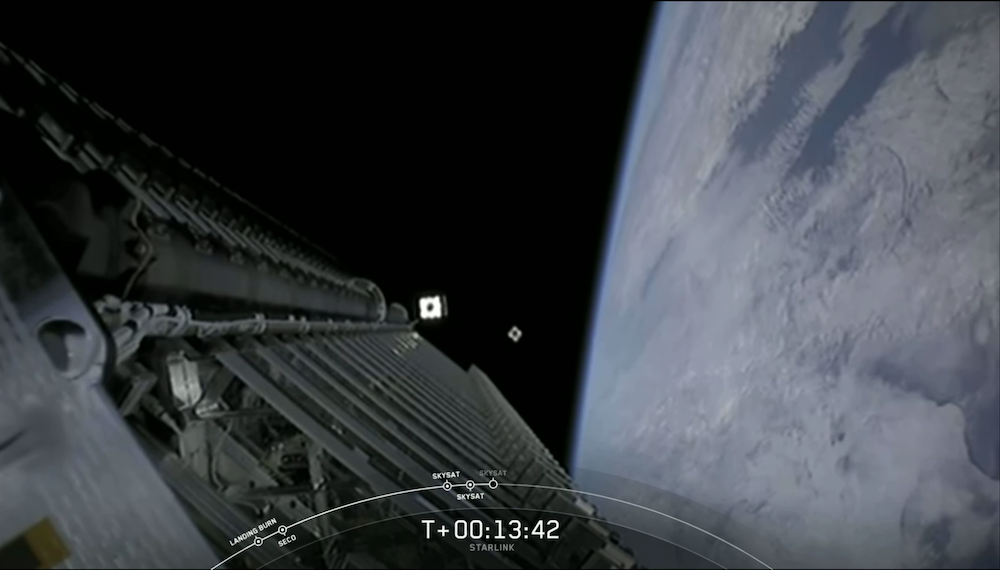WASHINGTON — SpaceX completed its ninth bulk Starlink launch June 13, a mission that included a rideshare customer for the first time.
SpaceX’s Falcon 9 rocket lifted off from Cape Canaveral Air Force Station in Florida at 5:21 a.m. Eastern, carrying 58 Starlink broadband satellites instead of the usual 60. The rocket carried slightly fewer Starlink satellites to make room for three remote-sensing SkySat satellites for Planet.
SpaceX deployed the SkySat satellites first, about 13 minutes after liftoff, followed by the Starlink satellites about 39 minutes after liftoff.
The mission used a Falcon 9 booster that flew two cargo missions to the International Space Station for NASA, the last being CRS-20 in March. The rocket featured a previously flown payload fairing, with one half recovered from the Jcsat-18/Kacific-1 satellite mission in December, and the other from SpaceX’s third Starlink mission, which took place in January.
SpaceX recovered the rocket’s first-stage for a third time, landing the booster on the drone ship “Of Course I Still Love You” in the Atlantic Ocean.
The launch marks the beginning of the rideshare program SpaceX announced in August 2019, offering regular opportunities for smallsat operators to hitch rides on Starlink missions.
SpaceX Lead Manufacturing Engineer Jessie Anderson said the launch contract covering Planet’s three SkySat satellites was signed six months ago. Planet’s Saturday launch, and a second Starlink rideshare scheduled for July will complete the operator’s constellation of 21 SkySats, a fleet that complements Planet’s larger constellation of Dove cubesats.
Once all 21 SkySats are in orbit, Planet says it will be able to image locations an average of seven times a day, with some locations seeing up to 12 revisits a day, at 50-centimeter resolution. Planet’s cubesats collect imagery in 3-5 meter resolution.
Another Earth-observation company, BlackSky, said in a recent interview that it has two satellites scheduled to launch June 24 on a Starlink rideshare mission. Barring schedule slips, that would be three Starlink launches in June, which would be the highest number of Starlink launches conducted in a month.
SpaceX was targeting two Starlink launches a month throughout 2020, but has averaged one Starlink launch a month so far. The company has launched 540 Starlink satellites to date, counting two prototypes, out of a planned system comprising several thousand.
SpaceX Chief Executive Elon Musk tweeted in late April that Starlink would begin a private beta service in about three months, and a public beta in six months. The company expects to start partial service over the U.S. and Canada late this year, followed by global coverage in 2021. SpaceX updated its Starlink website June 12 to allow prospective customers to sign up for news and service availability announcements.
